We’ll see you in there.
Connect to customize your food & drink discovery.
By signing up you agree to our Terms of Service and Privacy Policy.
Azura
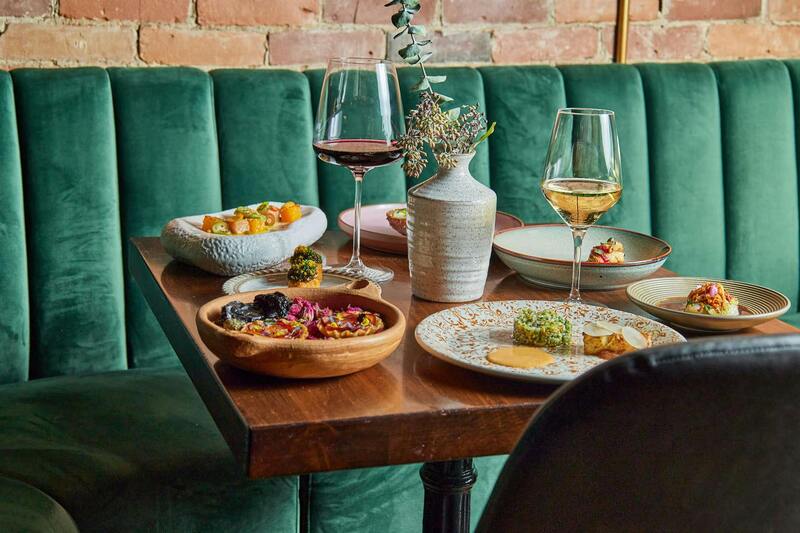
It used to be that dining on the Danforth conjured images of cheery tavernas serving heaping platters of souvlaki, washed down by retsina. You surely didn’t imagine easing into a plush green banquette and embarking on a multi-course fine dining adventure of Mediterranean-inspired dishes, paired with rare, blow-your-mind wines and/or madly innovative spirit-free libations.
But as Dylan famously sang, “the times they are a-changing” – as is the Danforth. With their new restaurant Azura, owners Joshua Mott and Adam Ryan are out to reflect these changes, and shepherd them towards a new culinary horizon.
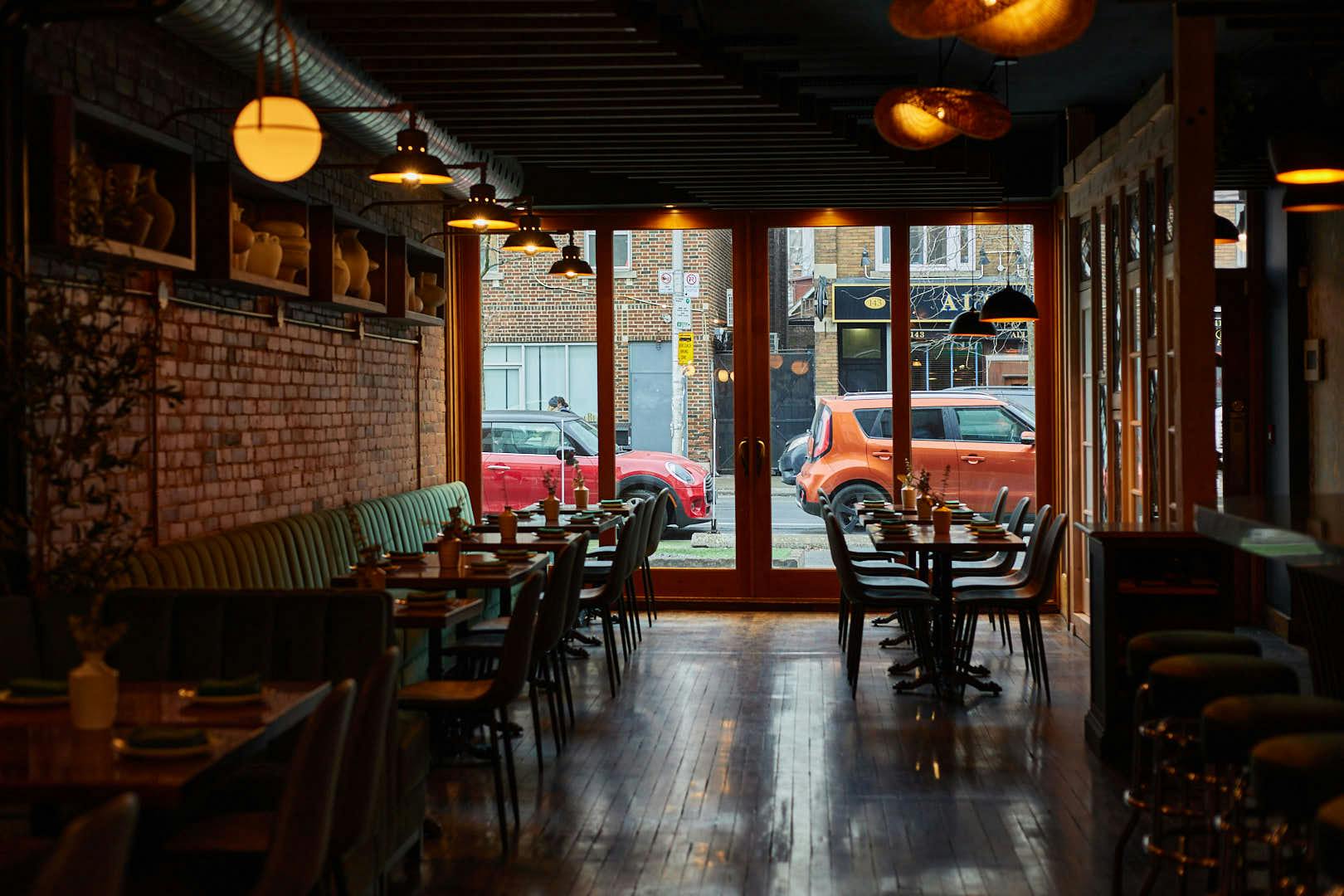
Mott and Ryan first partnered up in 2016 when they opened Her Father’s Cider Bar + Kitchen, a farm-to-table, cider-centric restaurant on Harbord (Mott’s parents own a cidery). They followed up that still ongoing success, in 2022, with The Red Eye, an old-school American-style diner in Chef’s Hall. Yet as Ryan – who also serves as Azura’s excecutive chef – points out, the pair had never tried their combined hands at fine dining, specifically fine dining built around carefully curated tasting menus.
“The city changed a lot in the last three years,” notes Ryan. “Many restaurants that offered that kind of dining experience had to pivot, switching to fast casual and quick service.” Having already done quick and casual, Mott and Ryan decided the time was ripe for a reset. “Why not offer a fine dining experience, but in a more casual environment? Instead of white tablecloth extravagance, serve tasty food at a reasonable price point, which would force us to be more creative.”
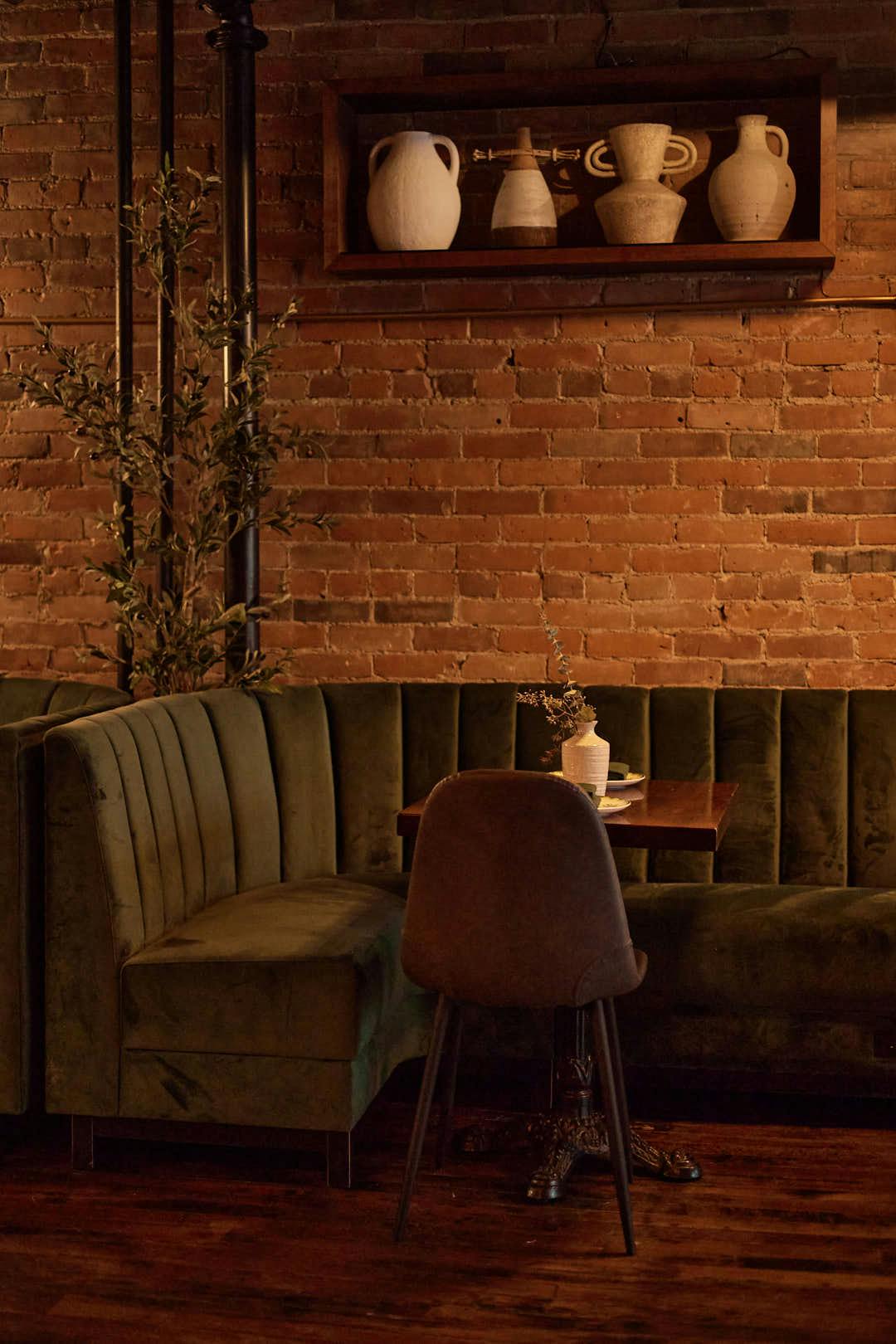
Multiplying the creative possibilities was the duo’s choice to focus on Mediterranean cuisines – with an exciting emphasis on the plural. While paying respectful homage to the Danforth’s Greek culinary legacy, the decision was also based on Mediterranean food – North African, Middle Eastern, southern European – being “timeless… and a little healthier.”
Further upping the creativity quotient was Ryan’s decision to design Mediterranean dishes using Canadian (and more generally North American) flavours and ingredients. If you can’t quite picture how such a concept would play out, try conjuring sea urchin bucatini seasoned with sea buckthorn instead of lemon, or tagine featuring venison instead of lamb. “Sometimes with the food we wander off the beaten path,” says Mott, deliciously understating the fact.
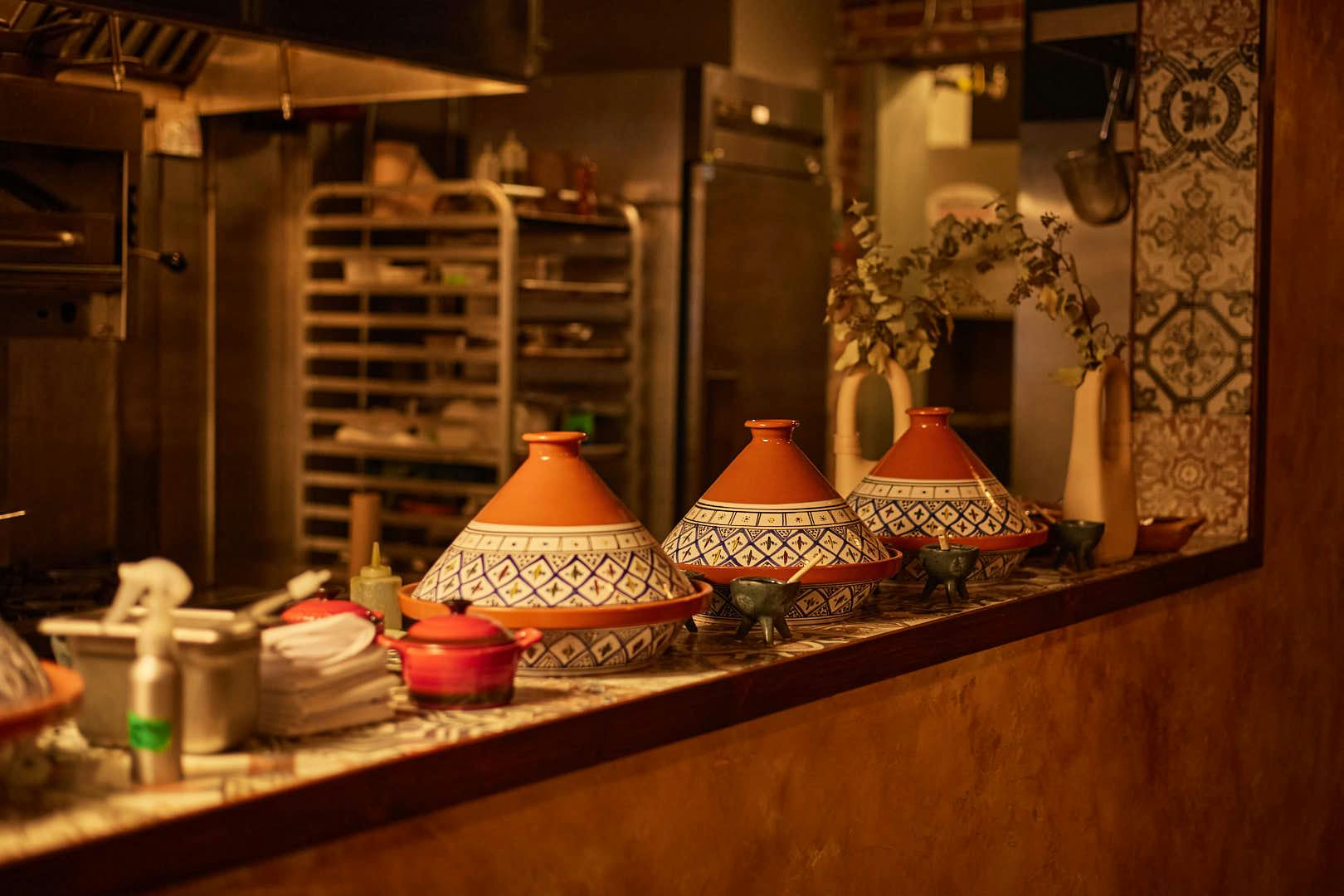
While Azura’s offerings lead you into unfamiliar realms, the spacious dining room – with its suave amber lighting, exposed brick walls and polished wood floors – keeps you grounded in the Mediterranean with decorative details such as Ancient Greek and Roman-style ceramics, colourful North African tiles and a large art work whose earthy tones and iridescent glow are reminiscent of Tuscan terracotta.
At the centre of it all is an open kitchen. Suspended over the chef’s counter, a gigantic version of Marcel Wander’s Skygarden lamp channels the decorated plaster ceiling of a Venetian palace while also literally placing the spotlight upon Chef Adam. “This is a chef’s restaurant first and foremost,” declares Mott, adding that guests are encouraged not just to ogle but to engage with Ryan and his crew.
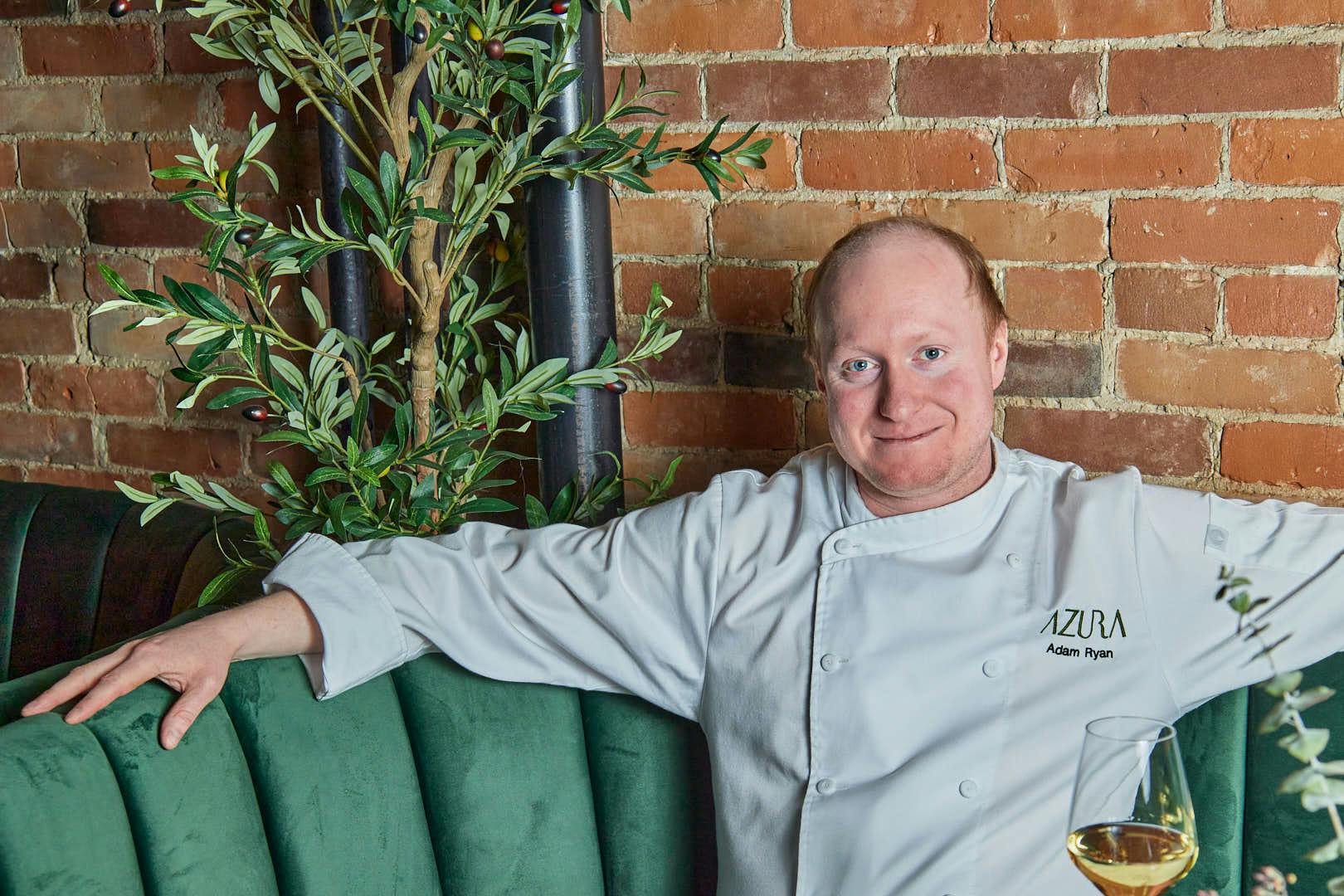
At Azura, diners have reason to be particularly curious about the dishes on the two nightly tasting menus – a full 10-12-course menu ($128) and a condensed 6-7-dish petite menu ($78). Unlike most of its Toronto counterparts, Azura’s tasting menus are blind, meaning – barring allergies or severe aversions that can be communicated in advance – when you sit down in those plush green banquettes, you’re embarking on an adventure into the unknown.
Ryan’s menus change frequently according to seasonality and whim. But they inevitably hook you right from the outset, with opening courses such as a trans-Mediterranean take on the classic luxurious trio of caviar, blinis and creme fraiche.
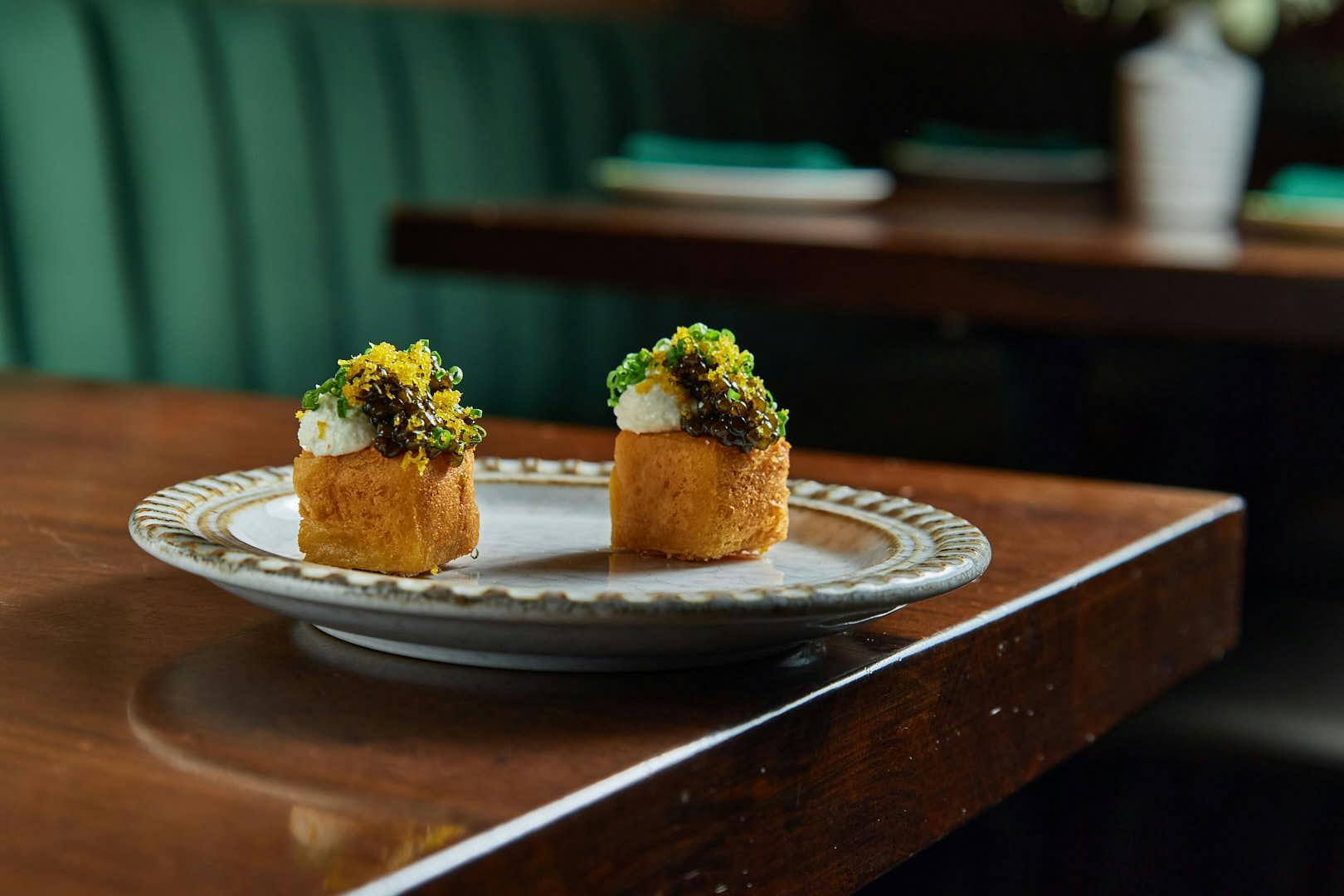
Instead of blini, Ryan’s re-imagined version features southern French panisse. The chickpea fritters are dolloped with a creamy labneh spiked with ambrosia apples and kolhrabi, then crowned with Majestic black sturgeon caviar. Shavings of traditional Greek avgotaraho – red mullet eggs, cured in salt and encased in a sweet protective coating of beeswax – provide a bright finishing touch.

A quiet riot of pinks and reds, twin tomato tarts arrive surrounded by a fragrant sea of tiny dried roses. Paper thin slices of kumato tomatoes are layered like petals into each tart, fashioned out of delicately flaky brik pastry and lined with a subtly floral harissa made from rose petals, rose hips and rose water. A final spray of rose water and olive oil anoints the tomatoes with a radiant glow and dewy freshness.
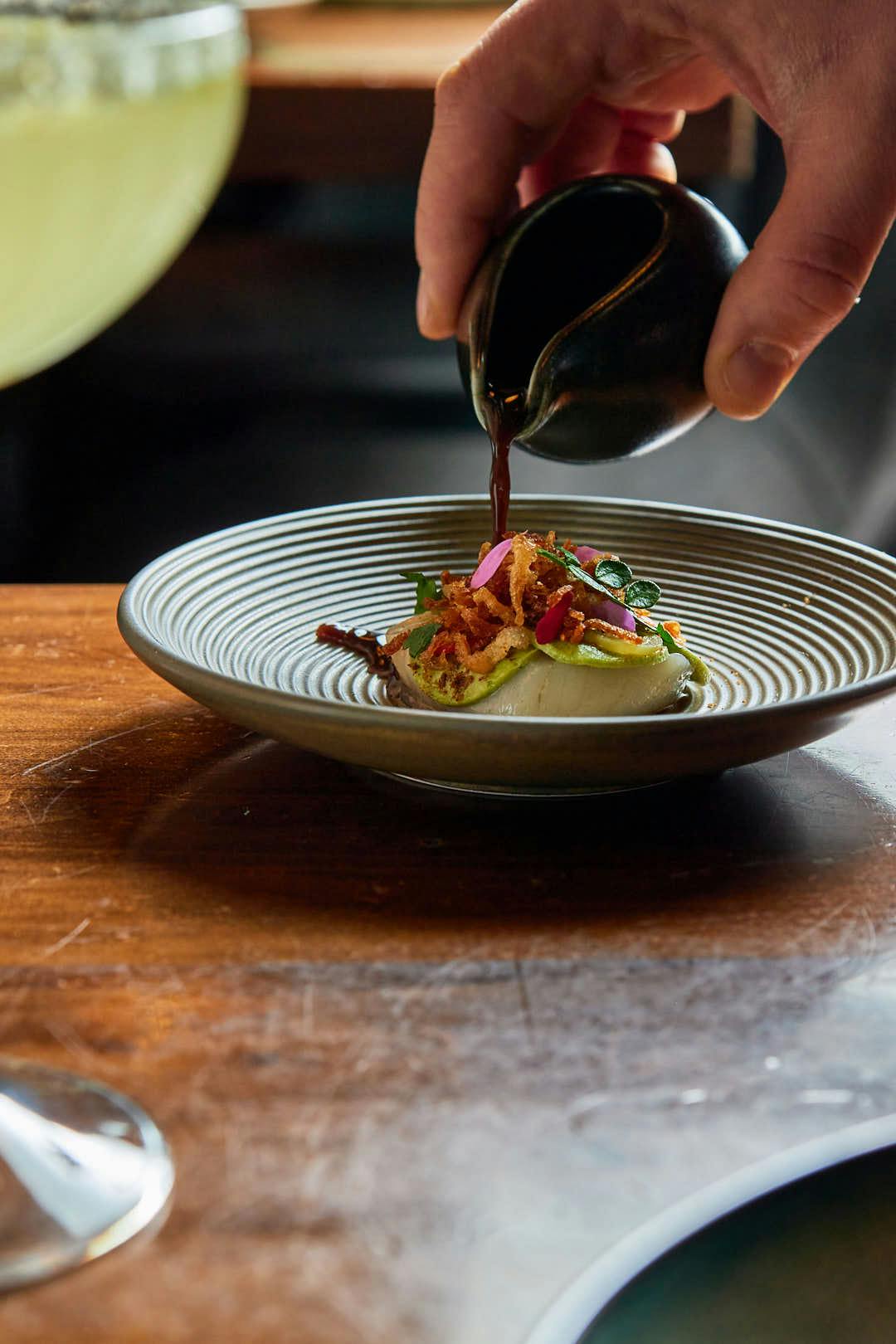
The raw scallop crudo is so astoundingly fresh and tender that you could easily swallow it whole and call it a (very happy) day. But Ryan dresses the bivalve up with a zesty tamarind-orange vinaigrette and takes it to town with a topping of creamy avocado seasoned with a house-made ras el hanout spice blend and shower of crispy shallots.
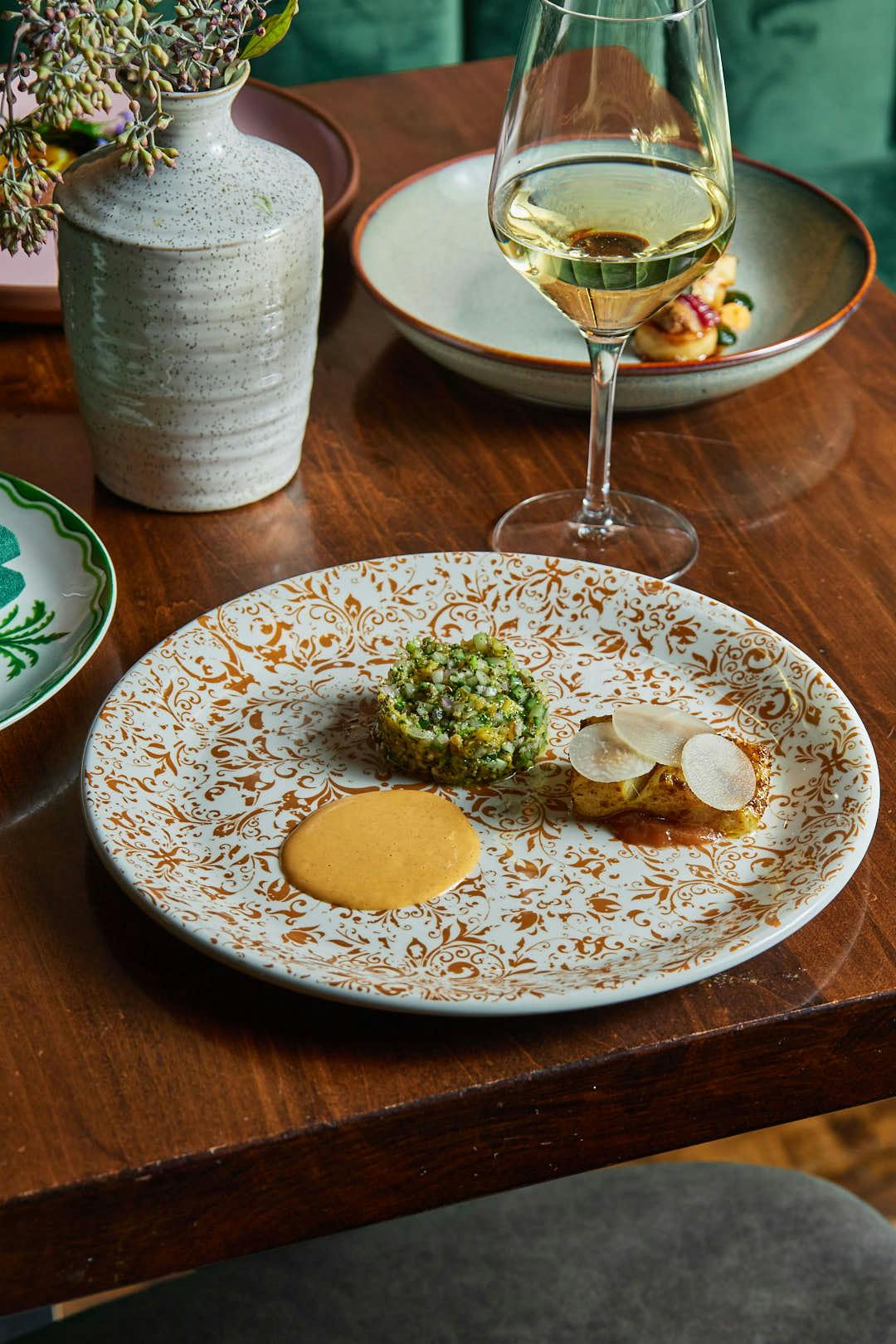
One of the menu’s mains is a take on shawarma that instead of juicy red meat features tender halibut. After being marinated, the fish is broiled in a manner that mimics those eternally spinning vertical rotisseries found in traditional shawarma joints. As a result, the fish flakes apart just as meat would on a spit. Topped with translucent discs of lacto-fermented turnip, the halibut sits in a pool of smoked tomato sauce, within easy dipping distance of a bright yellow sauce of tahini, chilies and confit garlic. Instead of the usual bulgur, a side scoop of tabbouleh features ivory pearls of pulverized flowering cauliflower, seasoned with the usual cucumber, tomatoes, shallots and fresh mint as well as the surprise addition of sweet, tropical mango.
“For me, one of the goals with cooking is how to develop the most flavour while using your ingredients to the best of their ability and not wasting anything,” confesses Ryan. “At Azura, we use scraps, trims, skins, whatever we can to make things more flavourful.”
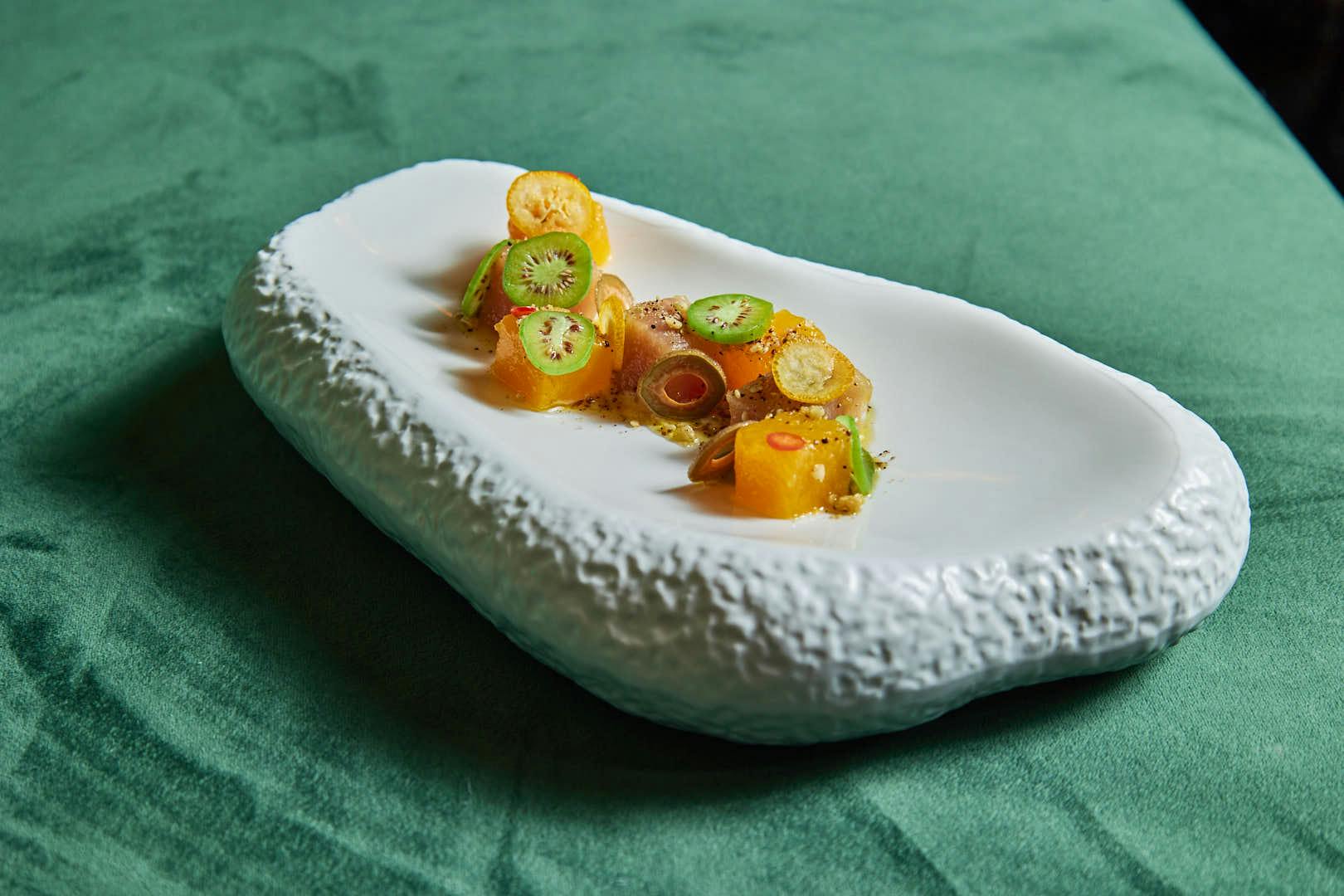
An inspired case in point is a dish that mingles bracingly fresh cubes of BC albacore tuna with creamy cubes of butternut squash lazing in a tangy pool of dressing made from Greek kiwis. Sprinkled on top are crunchy hazelnuts, pistachios, kumquats, red chilies and bewitching little North American kiwi berries. The clincher is the house-made dukkah spice mix, which integrates the kiwis’ leftover skins, dehydrated and ground to a powder that, yes, actually retains a subtle kiwi flavour.

More leftovers, this time shrimp heads, cleverly find their way into a dish featuring celeriac. Overlooked and underrated, the prehistoric-looking celery heart is cut into rounds and salt-baked in a dough made with red fife flour. Brushed with molasses made from shrimp stock, it’s topped with blood oranges, roasted chanterelles, pickled celery, fresh watercress and a shrimp aioli made from the aforementioned leftover heads. Adding herbaceous verve is a shockingly green sauce made from watercress.
One of the dishes Ryan is most excited about, he was initially concerned about diners’ reactions to the celeriac. “There aren’t many people craving celery root on a daily basis,” he acknowledges. “But guests have been blown away. Ultimately, I like to offer people an experience they wouldn’t have in their homes.”

People are definitely not making falafel Scotch eggs at home. Especially when they’re served with a black tahini garlic sauce, a side of stinging nettle puree, and a petite herb salad of fresh parsley, dill and mint sprinkled with toasted sesame seeds.
Instead of bringing the meal to an end with one dessert, Ryan generously offers two, both of them cheeky and ingenious plays on comfort food favourites.
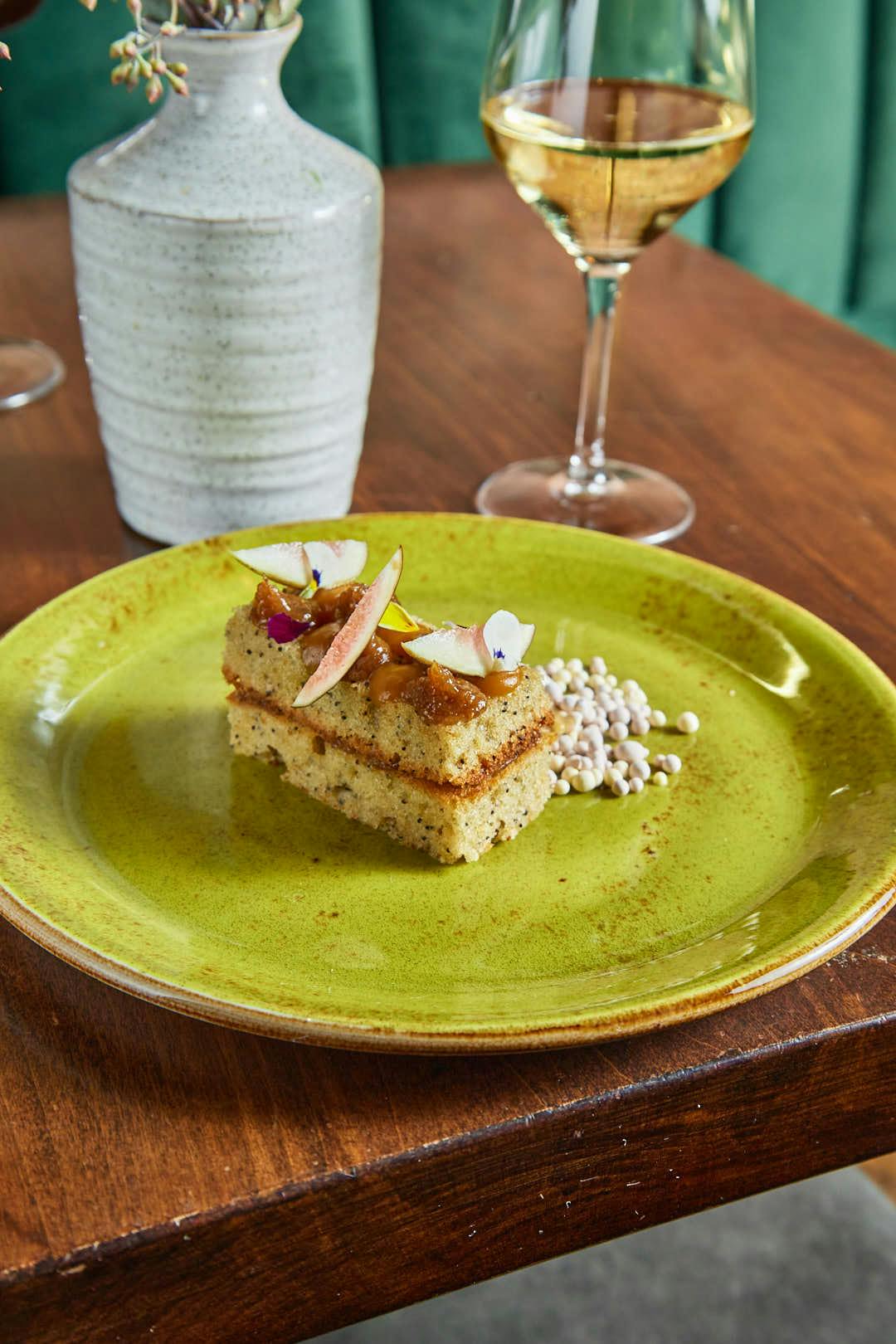
Riffing on a classic Fig Newton cookie is an olive oil and goat cheese sponge cake, filled with luscious fig jam and frosted with sweet potato icing. Ryan was clearly thinking far outside the cookie box, especially when he opted to surround the cake with white and pink ice cream pearls, flavoured with bergamot and hibiscus.
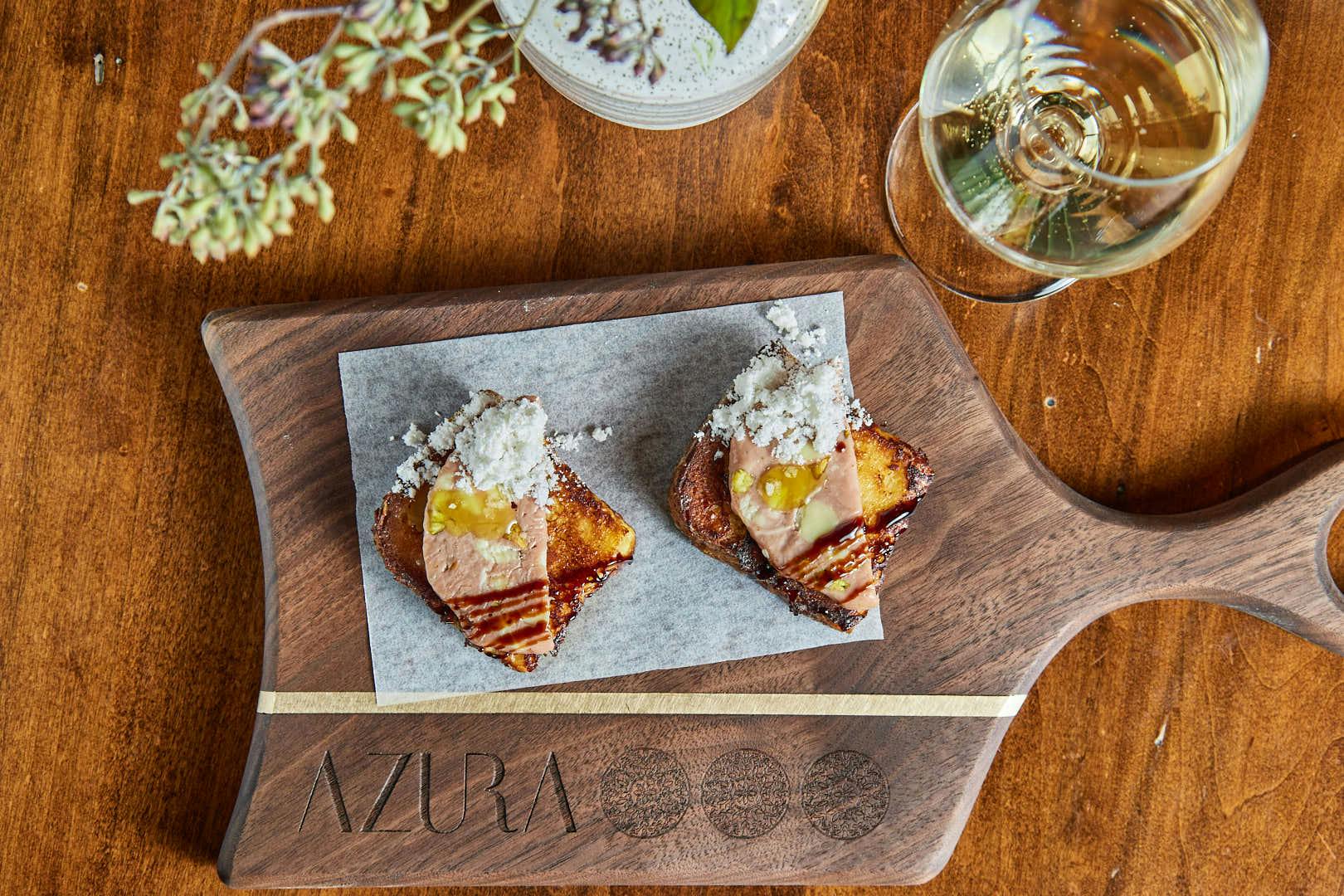
Mortadella for dessert? Why not, if comes in the form of a French marquise made from pink-hued ruby chocolate studded with pistachios and chunks of white chocolate that bear an uncanny resemblance to pork fat. The faux mort sits upon a brioche bed of pain perdu and is drizzled with olive oil and balasamic vinegar. A final dusting of white powder – a dead ringer for confectioner’s sugar – turns out to be nothing less than dehydrated Iberico pork fat.
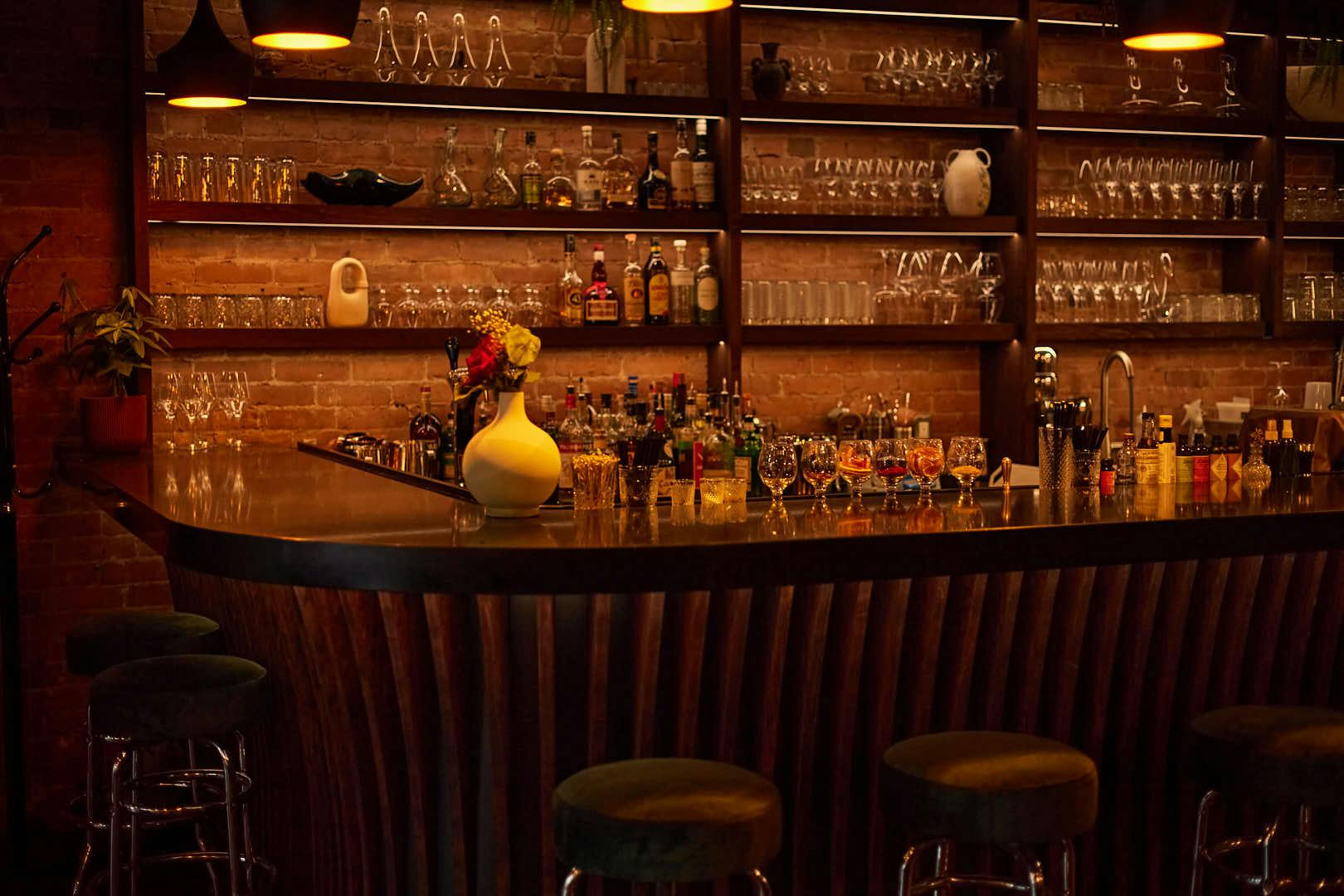
At Azura, the creativity genes aren’t limited to the kitchen. Contagiously, they spill over into the bar where sommelier Heather McDougall has compiled an arresting wine menu that hits all the key wine-making regions, but also includes some unusual treasures, many from the likes of Croatia, Lebanon and Greece, whose profiles pair intrinsically with Ryan’s dishes.
“This is stuff you’re not going to get anywhere else in the city. Especially on a by-the-glass list,” says Mott of the selections, available by the bottle and the glass as well as pairing options with the tasting menus.
From the Sicilian town of Marsala, Cantine Rallo’s Bianco de Evro is made with indigenous Insolia grapes. Crisp and full-bodied with a marked mineral salinity, it pairs wonderfully with the celeriac. Equally intriguing is Alain Graillot “Syrrocco,” a French Syrah produced with Moroccan grapes. This spicy red easily conjures the souks of Marrakesh and marries well with the tagine.

Something else you won’t get anywhere in the city are spirit-free cocktails designed to pair with the tasting menus. Bar manager Shayne Herbert works in close conjunction with Ryan, creating drinks that both enhance and provide exciting counterpoints to dishes’ flavours and ingredients.
“These are different from non-alcoholic versions of traditional cocktails,” explains Herbert. “They’re their own things.”
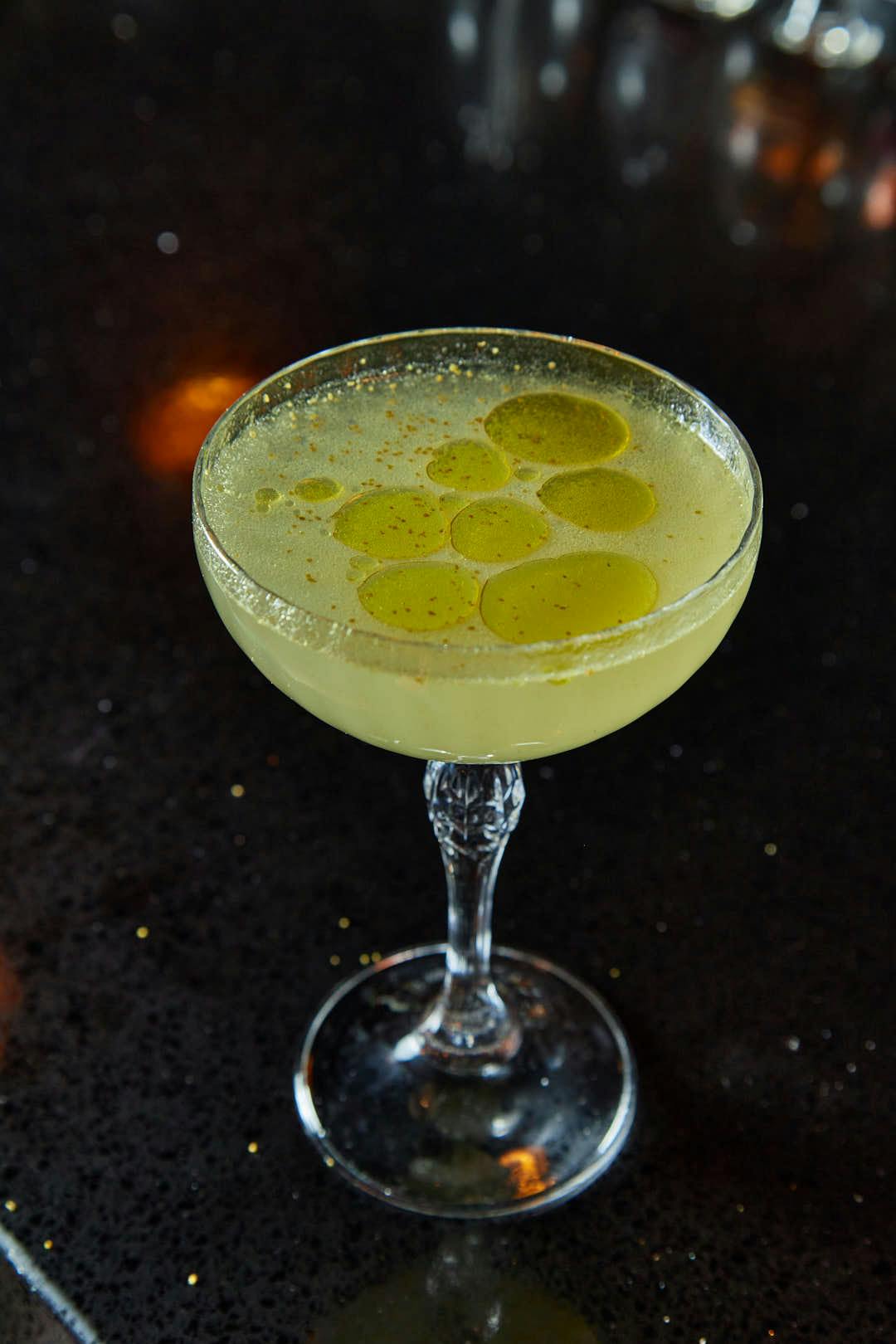
Indeed, upon tasting, there’s nothing conventionally mocktaily about these drinks at all. Concocted to pair with the tagine is an herbaceous basil EVOO emulsification. On the surface of the green-yellow liquid, glistening pools of Turkish olive oil foreshadow the drink’s smooth, viscous texture, which leaves a velvety coating on your palate.
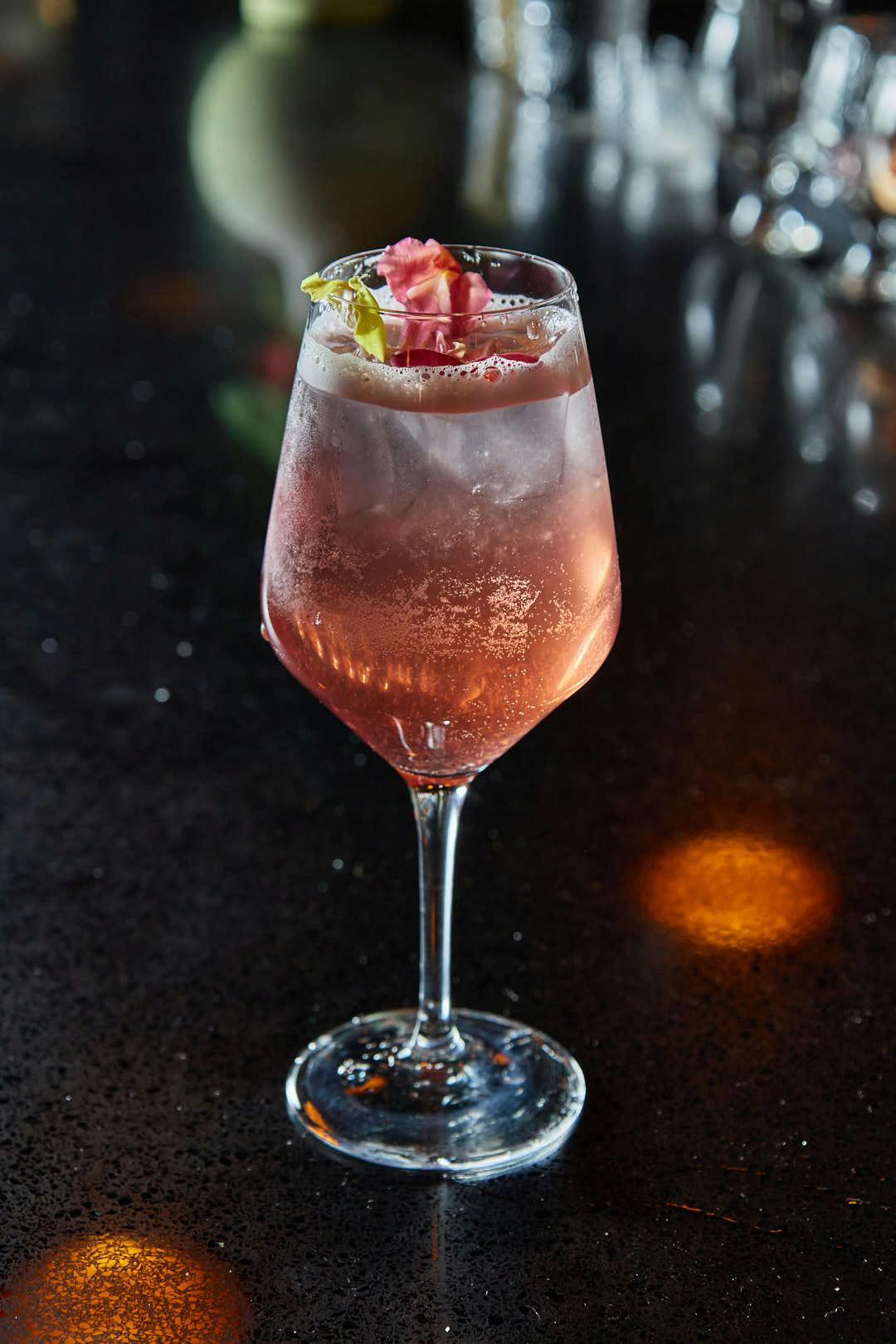
Making inspired use of the smoker that Mott and Ryan inherited when they took over the business is a smoked strawberry drink. Strawberries, sugar and even water (!) are smoked – then combined to make a char-flavoured strawberry syrup that is refreshed and brightened up with the addition of yuzu.
If it all seems a little wondrous to wrap your mind around, rest assured that the staff carefully explains each dish and drink as it’s being (beautifully) presented. And when the adventure is over, you’ll take leave of Azura armed with your own copy of that night’s menu, written proof that it wasn’t a dream, as you head out into the concrete reality of the Danforth.
Recommended For You